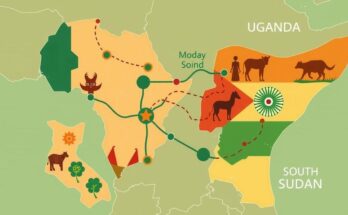The Iran-Pakistan border faces increasing terrorism, with significant spikes in attacks reported in Sistan and Baluchestan, Iran. This reflects a critical need for enhanced cooperation between Iran and Pakistan. Muhammad Murtaza analyzed the situation, pointing out the complexities surrounding funding for terrorist organizations and the importance of joint counterterrorism efforts amid differing security priorities.
Terrorism continues to pose a significant threat along the Iran-Pakistan border, particularly in the Sistan and Baluchestan region of Iran, which has experienced a staggering 115% increase in attacks recently. This area has become the epicenter of violent incidents, accounting for 68% of Iran’s recent terrorist activities, reflecting the urgent need for comprehensive cooperation between Iran and Pakistan to combat these threats. In an interview, Muhammad Murtaza, a project manager at the Pakistan Institute for Peace Studies, analyzed terrorism trends in Pakistan and the broader regional implications.
Pakistan has also faced extensive challenges related to terrorism, particularly after the Taliban’s rise in Afghanistan. The primary terrorist groups active in Pakistan today include Tehrik-e-Taliban Pakistan (TTP), the Balochistan Liberation Army (BLA), and emerging factions, with targeted attacks on the increase. In Khyber Pakhtunkhwa, 95% of attacks were linked to TTP, resulting in substantial casualties as the internal security landscape continues to deteriorate.
Financing for terrorist groups in the region is complex, relying on various methods including charitable donations, extortion, and illicit activities. While external support remains a factor, tracing the origins of funding can be challenging due to the clandestine nature of their operations. Additionally, ransomware attacks and criminal-terrorist partnerships help sustain their activities, perpetuating the cycle of violence.
Key obstacles to effective cooperation between Iran and Pakistan include differing security priorities and a lack of mutual intelligence sharing. While both nations are aware of the threats presented by terrorist groups, concrete coordination is essential for a united response against the border’s growing violence.
Though a security agreement was signed in 2014 aimed at counterterrorism collaboration, tangible outcomes remain limited. Recent military operations along the shared border indicate a more proactive stance, suggesting frustration with any acts of terrorism remaining unchallenged by the other party, causing public unrest over perceived infringements on sovereignty.
The role of external actors like the United States, Saudi Arabia, and India complicates regional security. Their influences can shift Pakistan’s foreign policy, while U.S. sanctions on Iran hinder mutually beneficial projects. Dialogue among regional players, including those historically aligned with jihadist activities, is necessary for sustainable peace and collaboration along the border.
Strengthening bilateral cooperation could help mitigate the threat posed by terrorism. Increased confidence-building measures in political, security, and economic arenas could pave the way for a more stable coexistence. Past exchanges between military officials from both nations have laid the groundwork for future collaborative efforts, emphasizing the need for consistent engagement to address mutual security concerns.
To effectively combat the surge in terrorism along the Iran-Pakistan border, both countries must enhance their cooperation across various sectors. Increased intelligence sharing, strategic counterterrorism initiatives, and confidence-building measures are necessary. Without a united front, the ongoing violence and challenges posed by terrorist organizations will persist, affecting the stability of the entire region.
Original Source: www.tehrantimes.com




